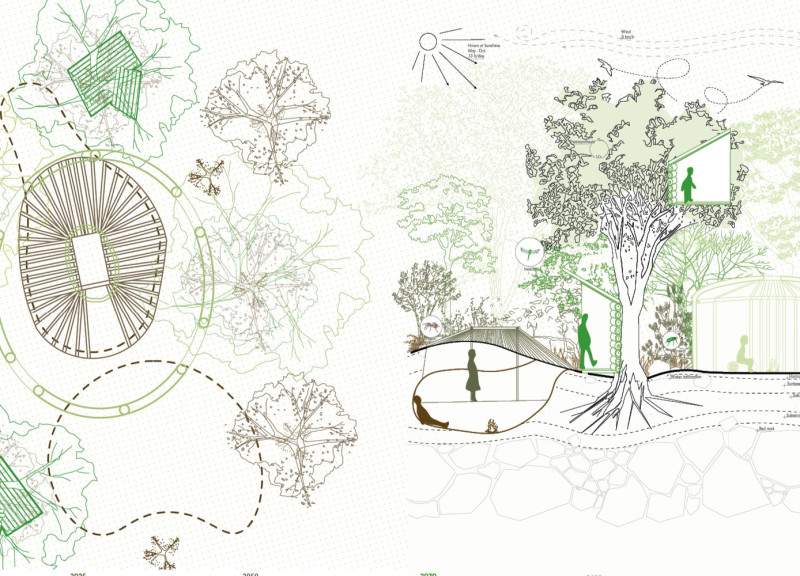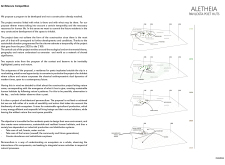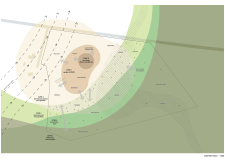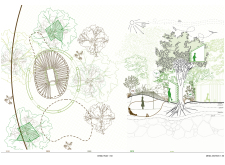5 key facts about this project
The design is a residence for poets located in a rural area, thoughtfully positioned to provide a peaceful retreat away from city life. It aims to create a sustainable living environment that fosters creativity and connection to nature. The concept focuses on building a habitat that evolves over time, allowing residents to engage deeply with their surroundings. By combining ecological principles with artistic expression, the design seeks to enrich the lives of its inhabitants.
Conceptual Framework
The foundation of the design is rooted in the connection between the physical space and the environment. It avoids a fixed architectural form, embracing instead an open approach that allows for growth and adaptation in response to the landscape. This flexibility is important, as it encourages future residents to participate in shaping their own spaces, thus developing a sense of belonging and responsibility.
Ecological Integration
Key to the design are themes of ecology and environment, which play a vital role in its development. The layout features interconnected zones that promote biodiversity and ecological balance. The design applies principles of permaculture, aiming for an energy-efficient system that respects local ecosystems. This holistic approach helps maintain essential resources like soil, water, and air, contributing to the overall health of the site.
Materiality and Sustainability
Although specific materials are not explicitly mentioned, the design emphasizes sustainability and a respectful relationship with nature. It promotes the idea of self-sufficient living, encouraging residents to engage actively with their environment. This focus on sustainability nurtures an understanding of ecological integrity, allowing inhabitants to connect with the land more profoundly.
Design Outcomes
The integration of artistic expression with ecological considerations reshapes how living spaces can influence creative work. The residence invites poets to immerse themselves in their surroundings, enhancing their creativity and awareness of the natural world. This habitat serves as more than just a place to live; it becomes an evolving space that encourages creative exploration while reflecting the beauty of the landscape around it.























































